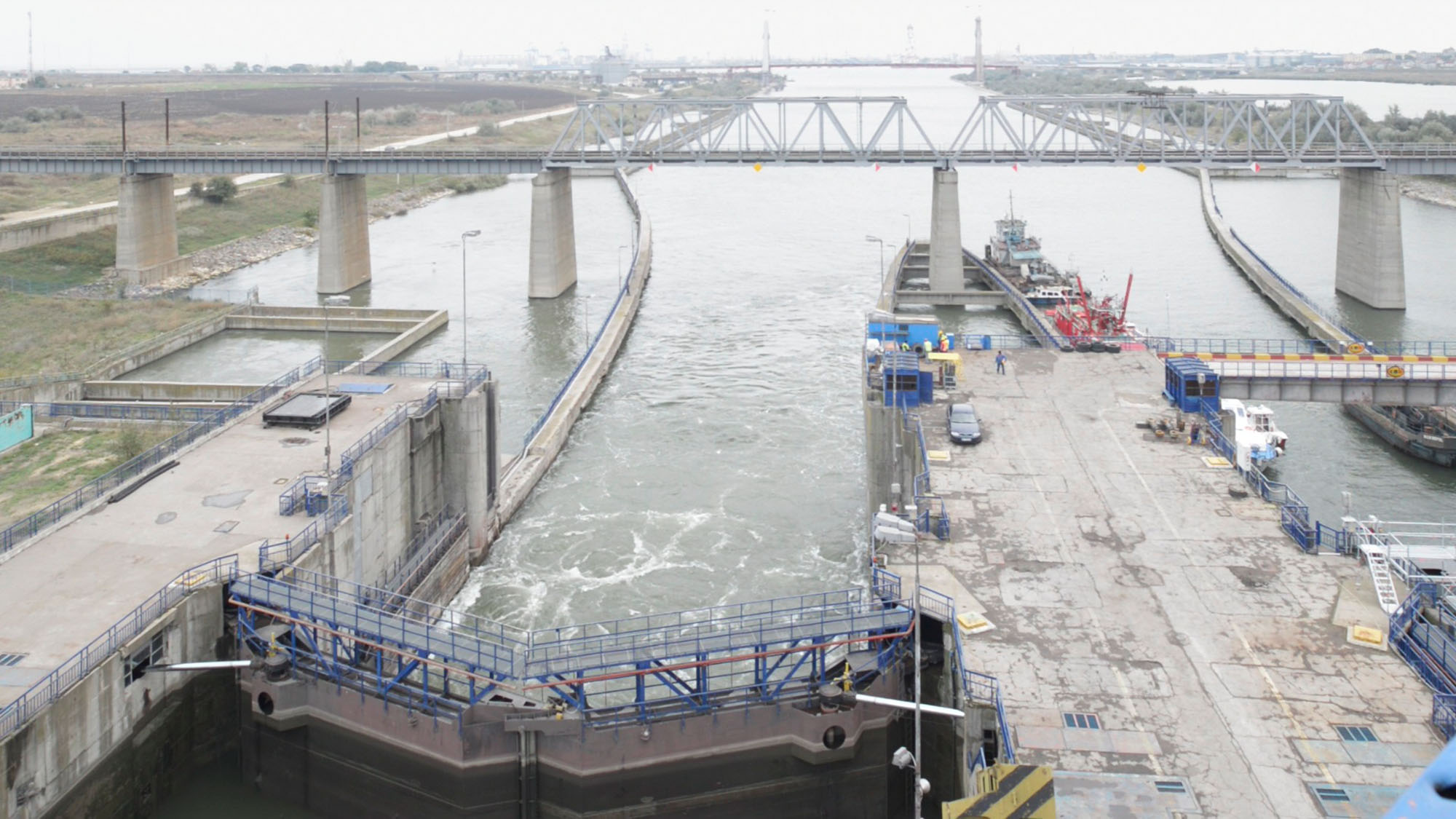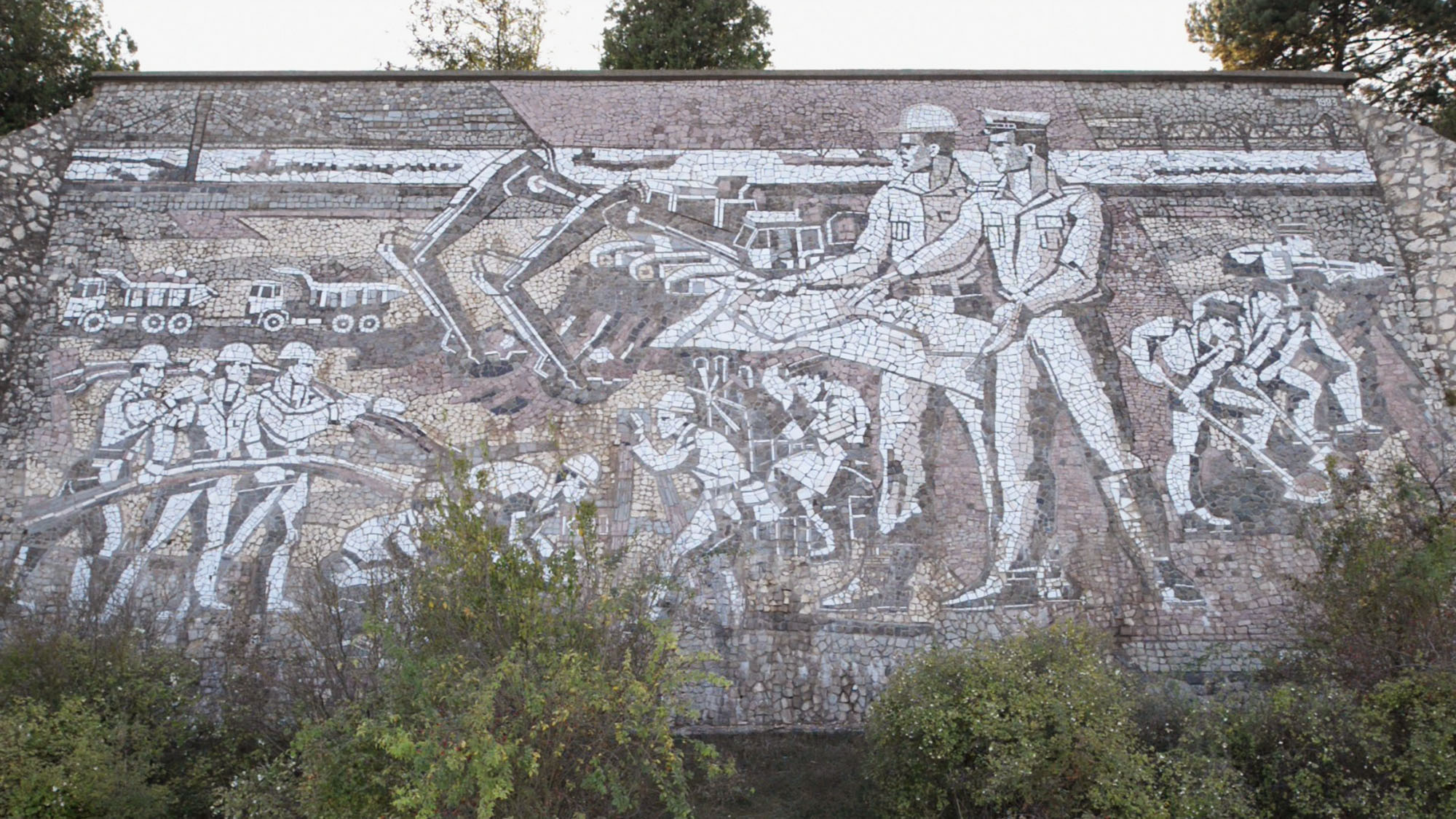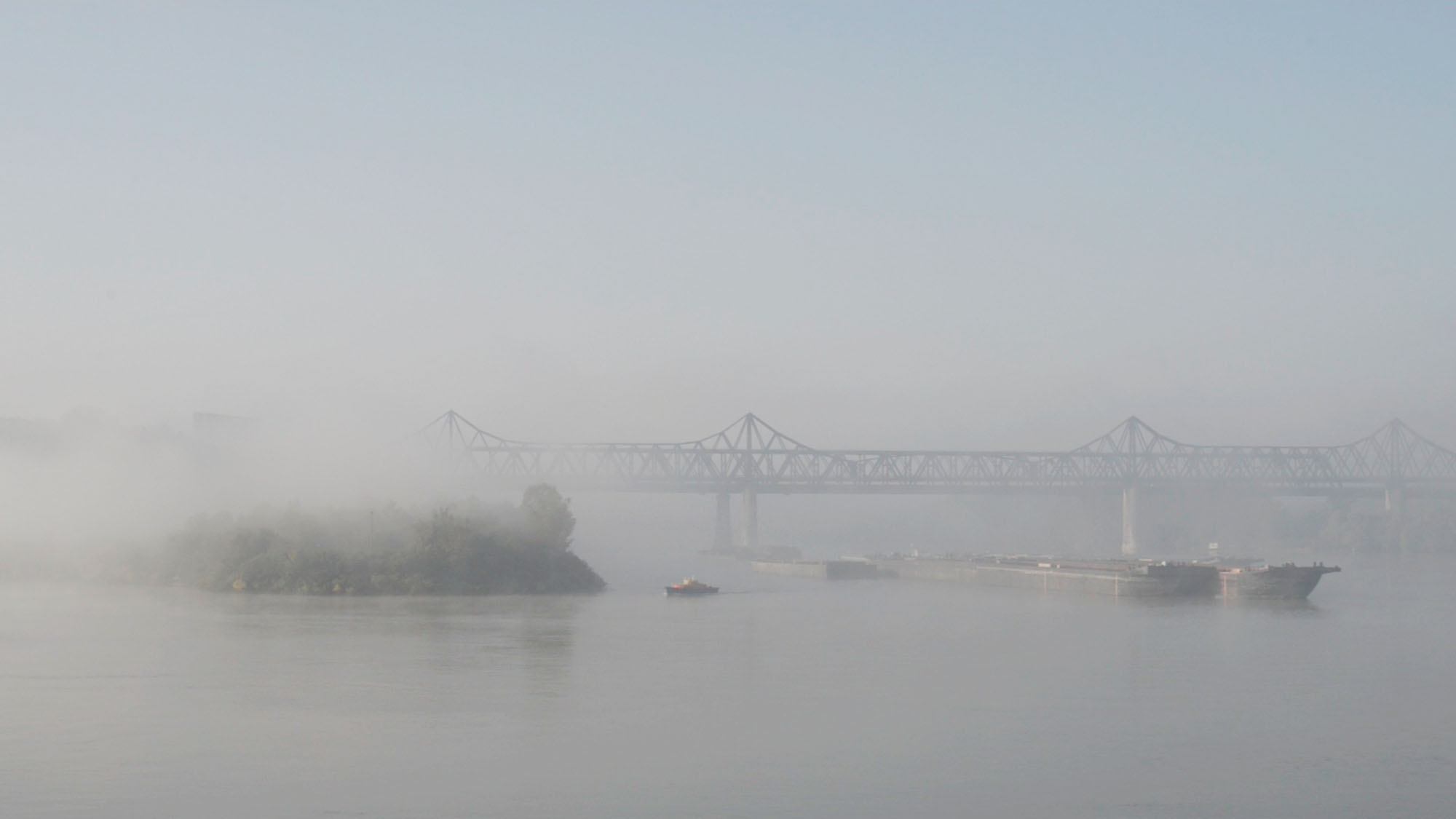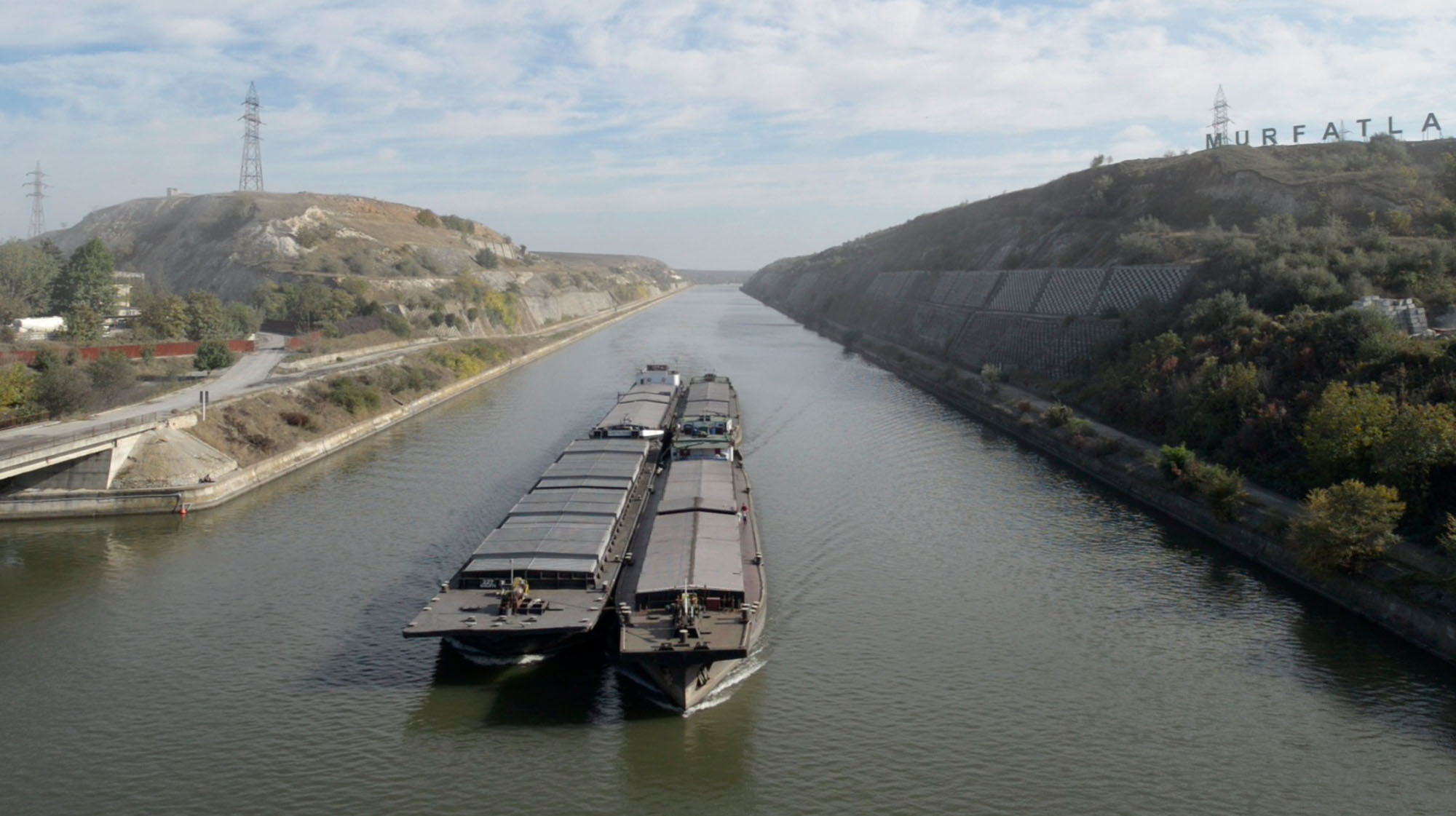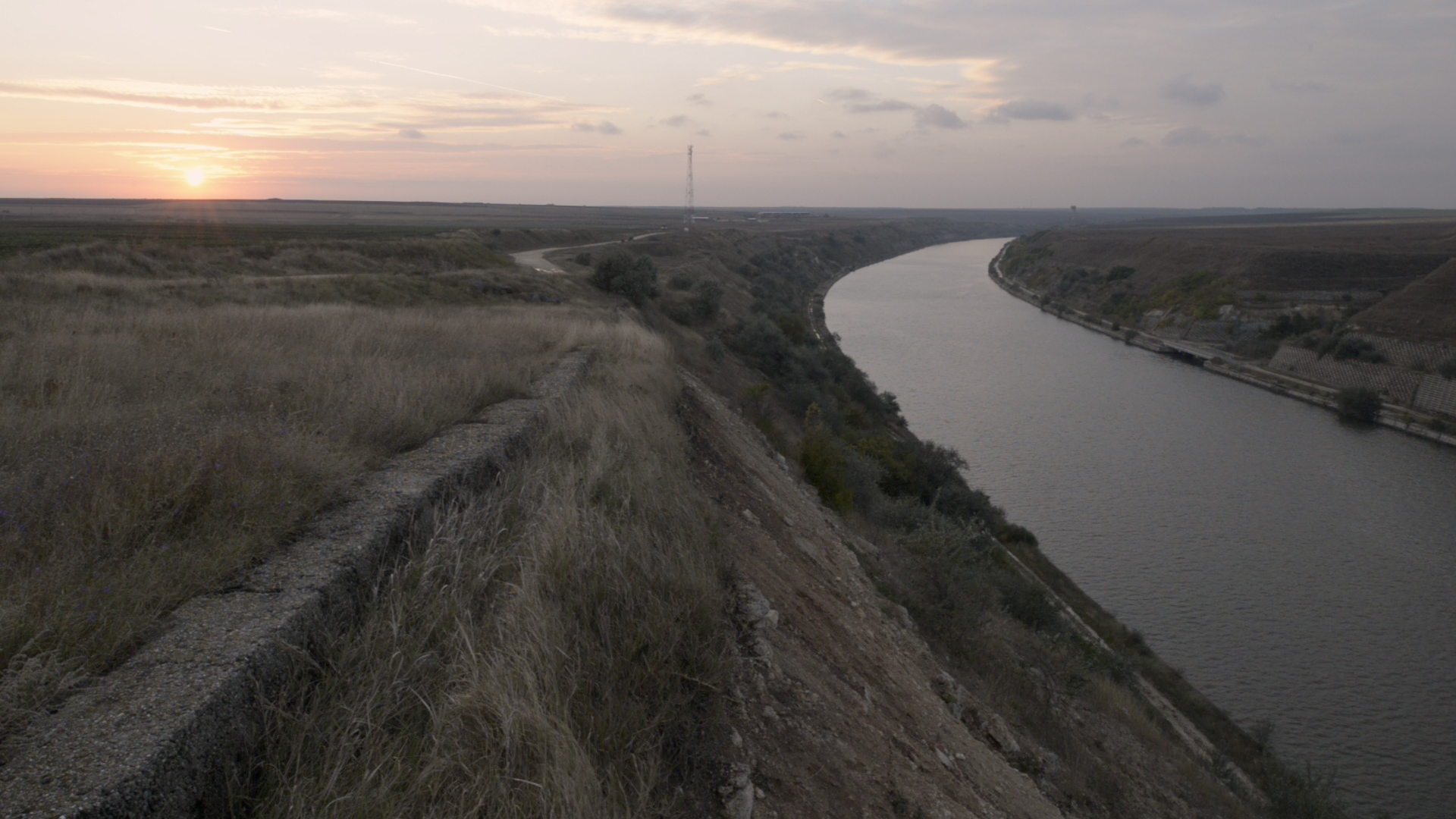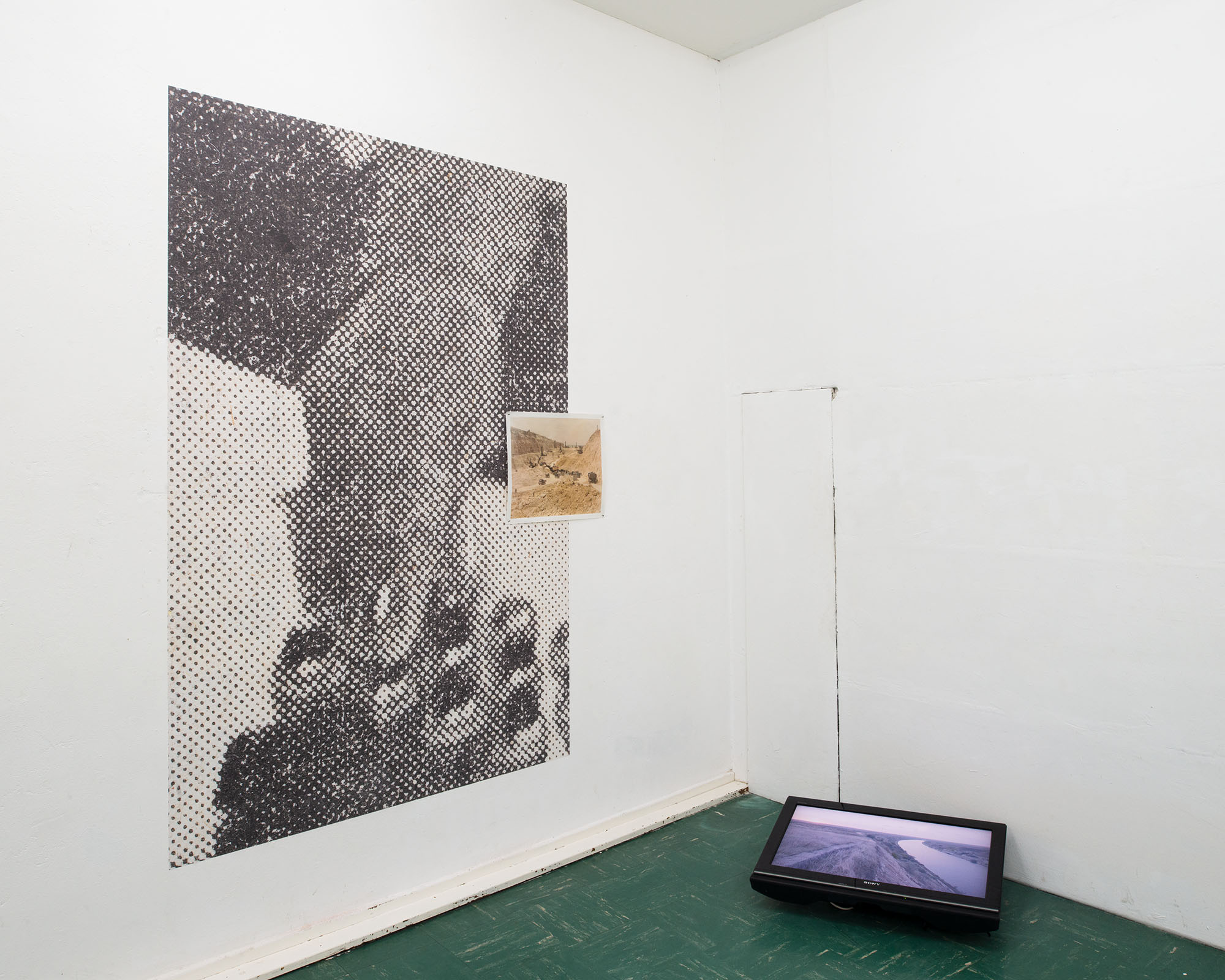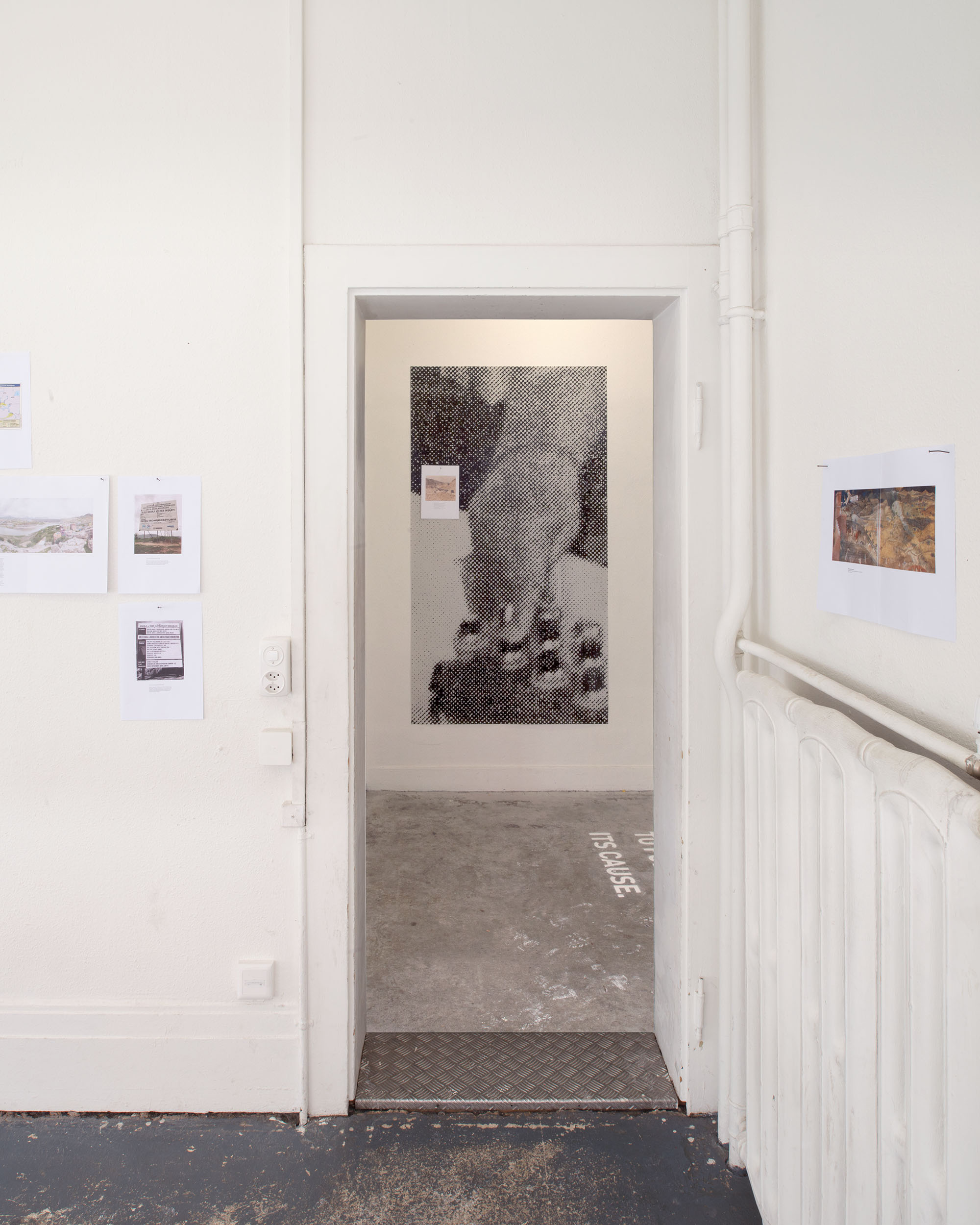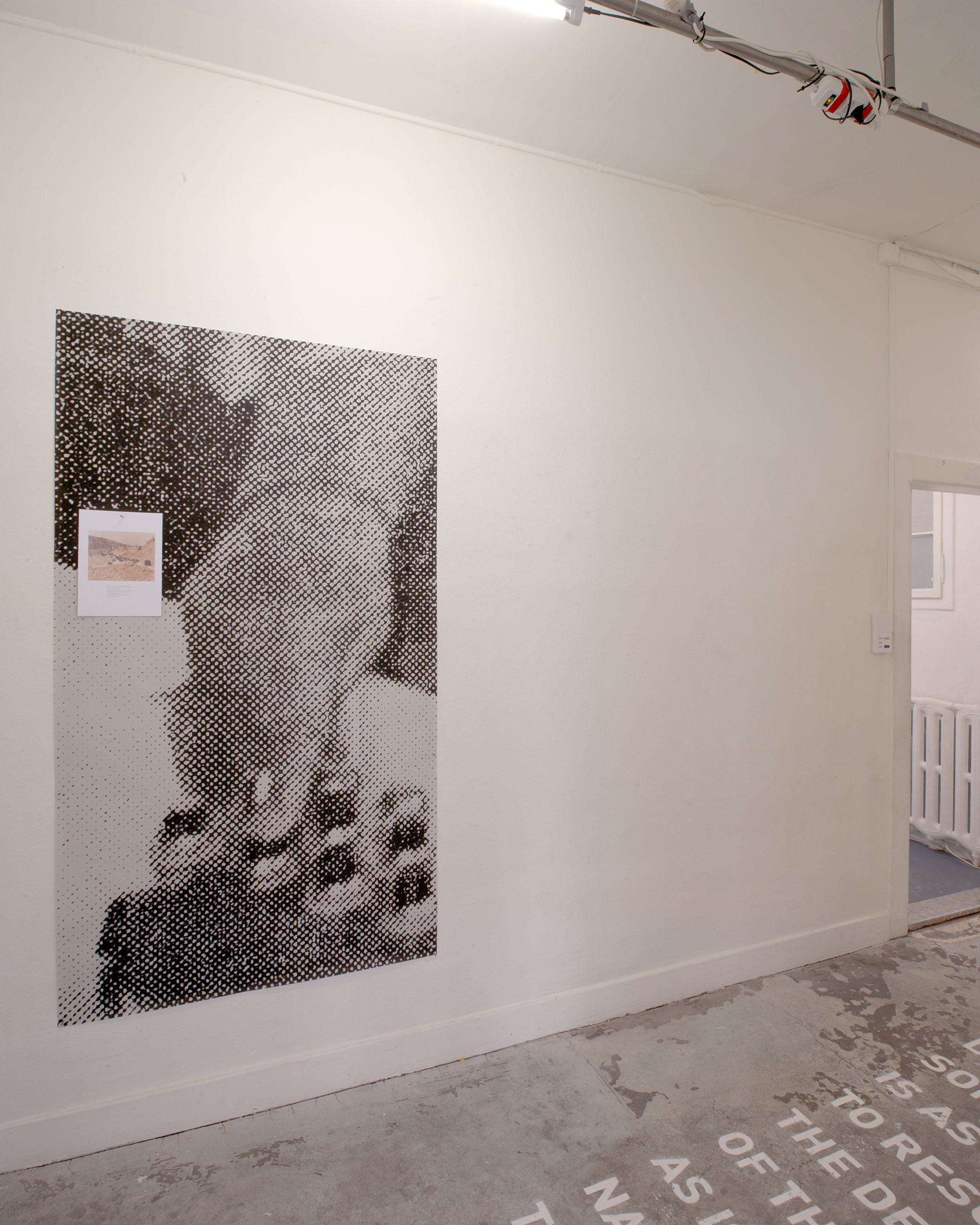The case study for DISTURBED HARMONIES [ANTHROPOCENE LANDSCAPES] about a mistake of nature, forced labour, and a dictator's prestige project revisits the Danube-Black Sea canal in Romania.
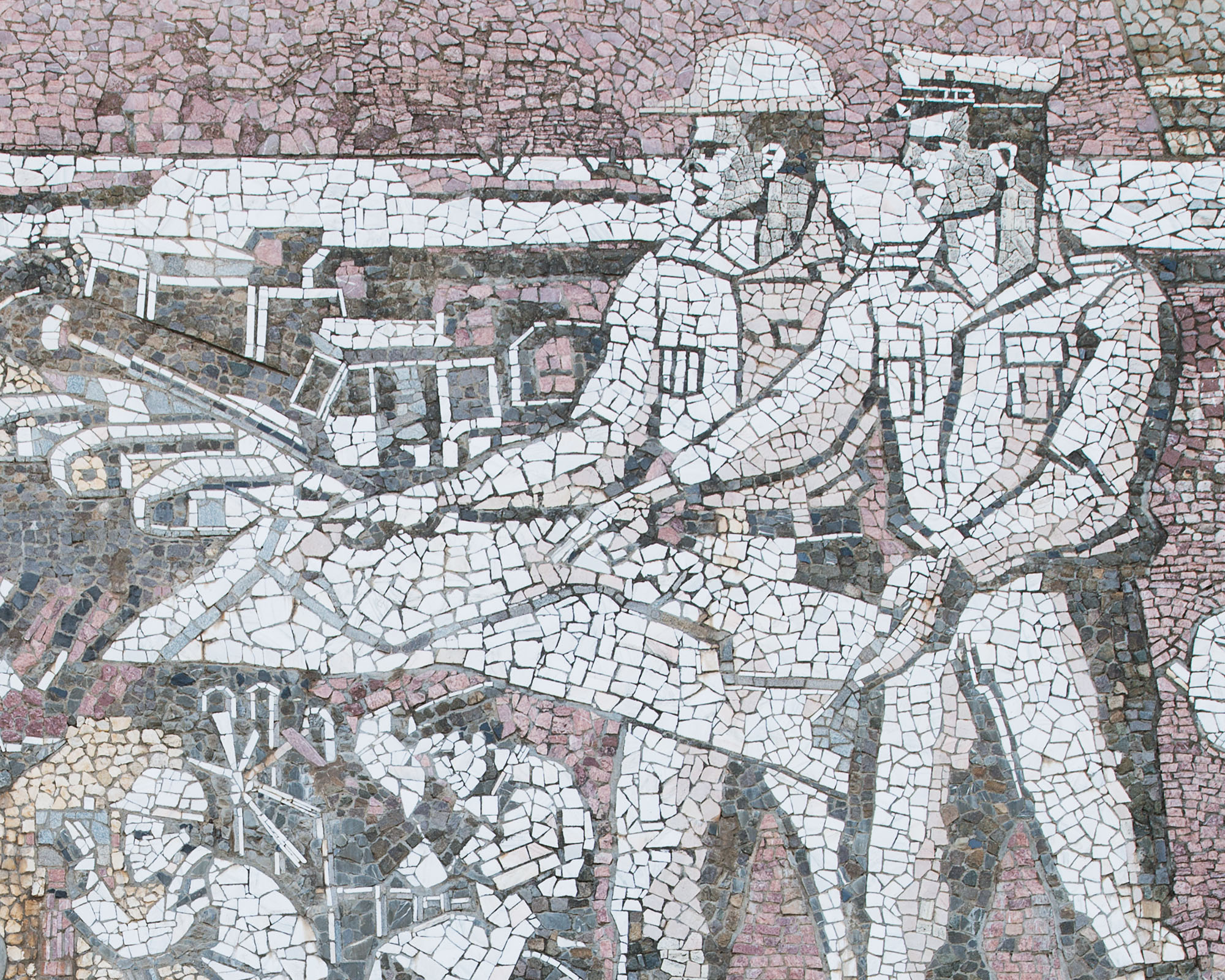
detail of Gheorghe Ioniță, Mozaicul monumental de la Canalul Dunăre-Marea Neagră, 1983
On its way from Serbia to the Black Sea, the Danube forms the border between Bulgaria and Romania for several hundred kilometres. Shortly before the river reaches the sea, an elevation in the Dobrogea region directs the river for about 300 kilometres to the North before it arrives at the Black Sea. Since the nineteenth century, plans were developed to correct “nature’s mistake” by building a Danube‒Black Sea Canal to connect directly to the …
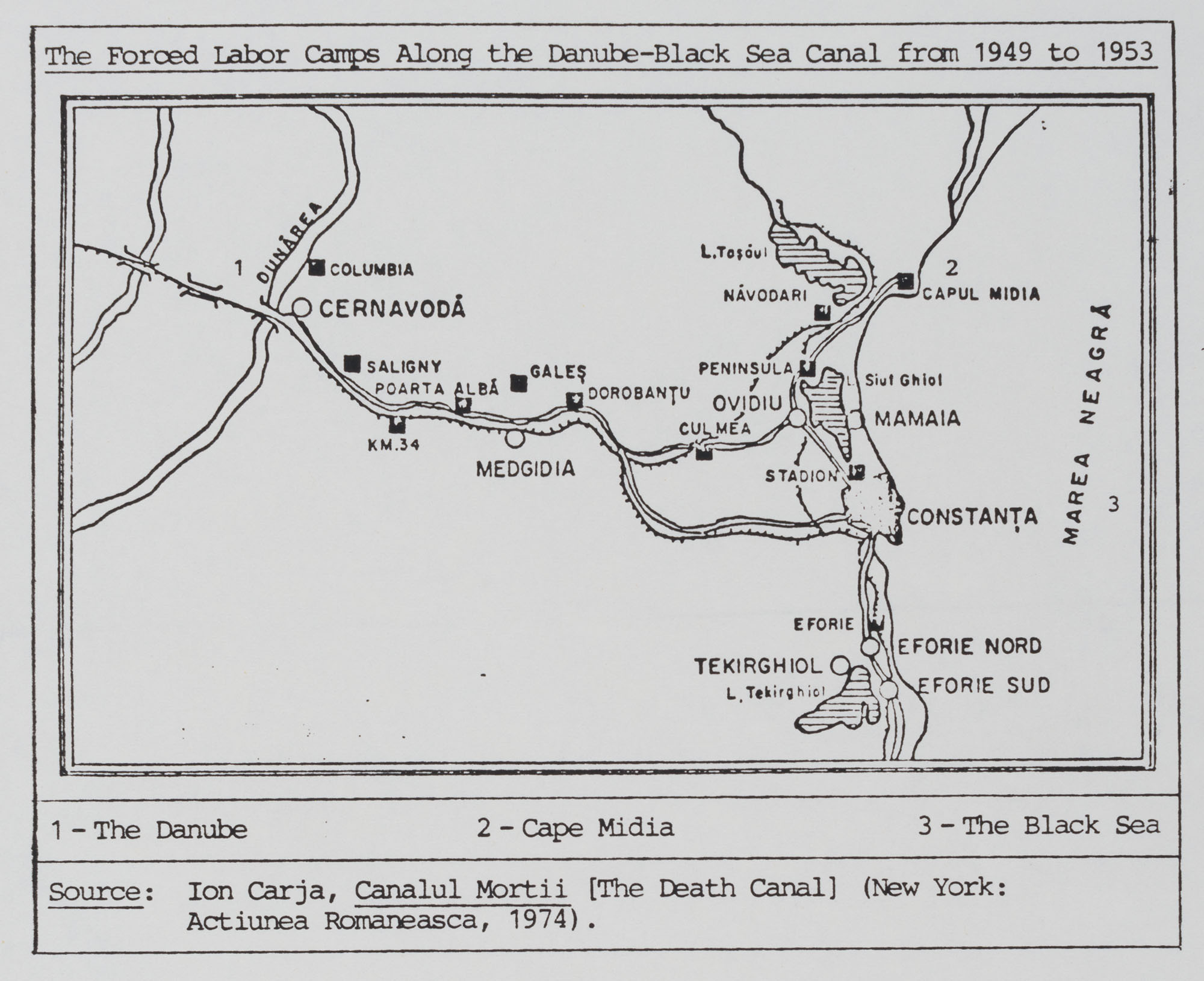
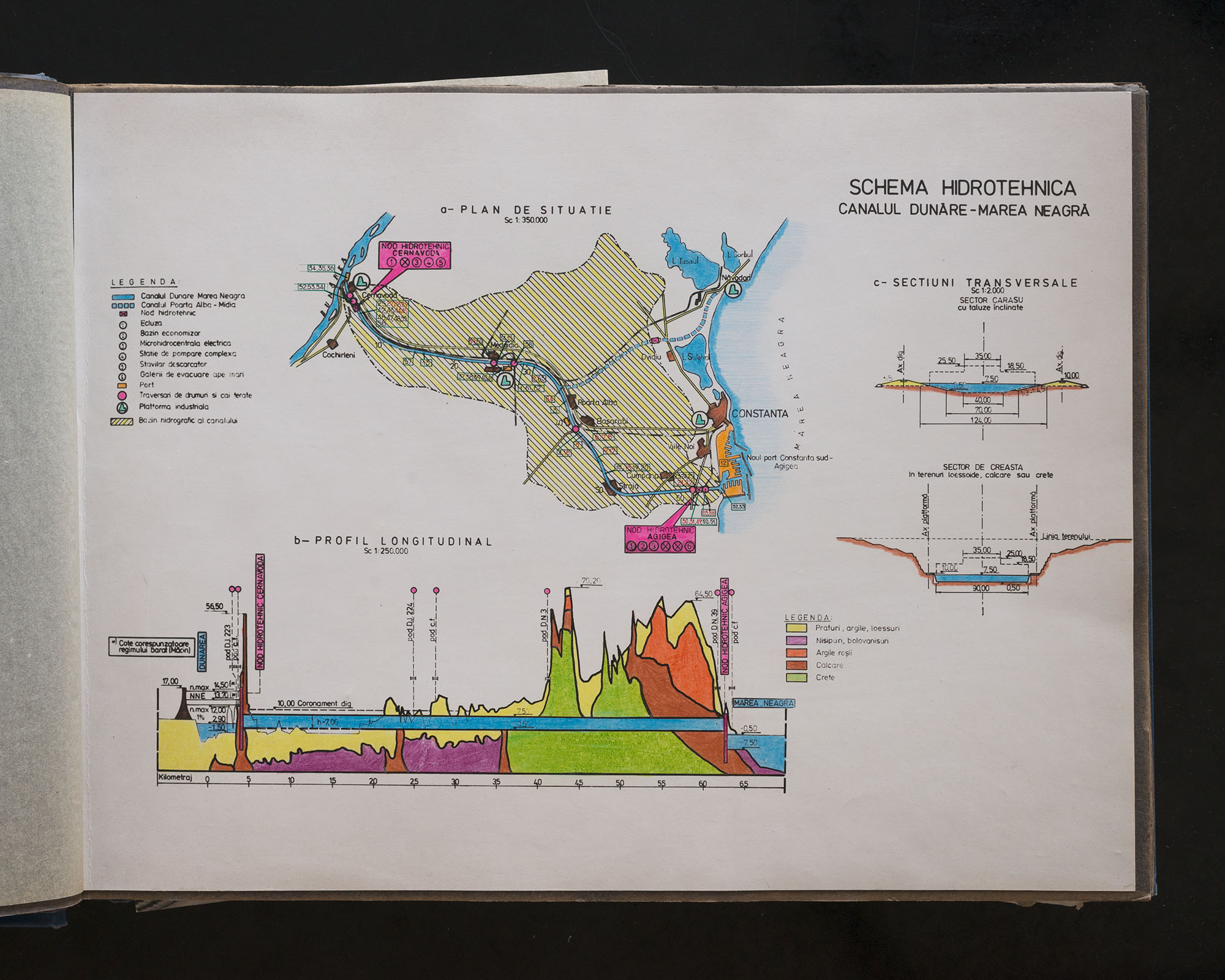
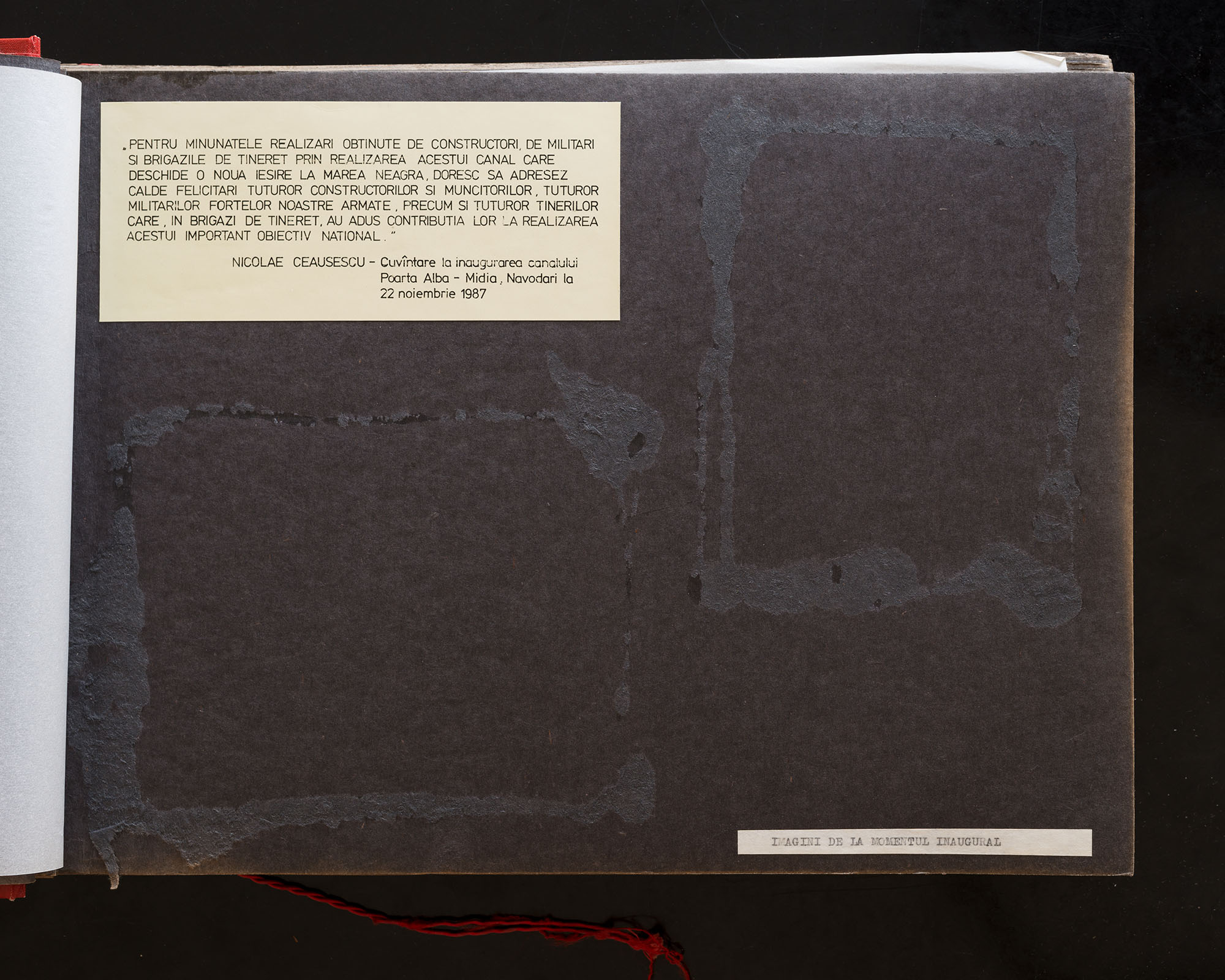
Photographs of the inauguration ceremony were torn out of the album after 1989.
MTTC-IPTANA, „Canalul Poarta Alba – Midia, Navodari“, Album Fotografic, etapa II, 1987Archives of ADMINISTRATIA CANALELOR NAVIGABILE S.A., Agigea

Scînteia, 27 May 1984, „TOVARASUL NICOLAE CEAUŞESCU A INAUGURAT IERI CANALUL DUNARE-MAREA NEAGRA“, p.3
HU OSA 300-60-1: 375; Records of the Radio Free Europe / Radio Liberty Research Institute; Vera and Donald Blinken Open Society Archives at Central European University, Budapest
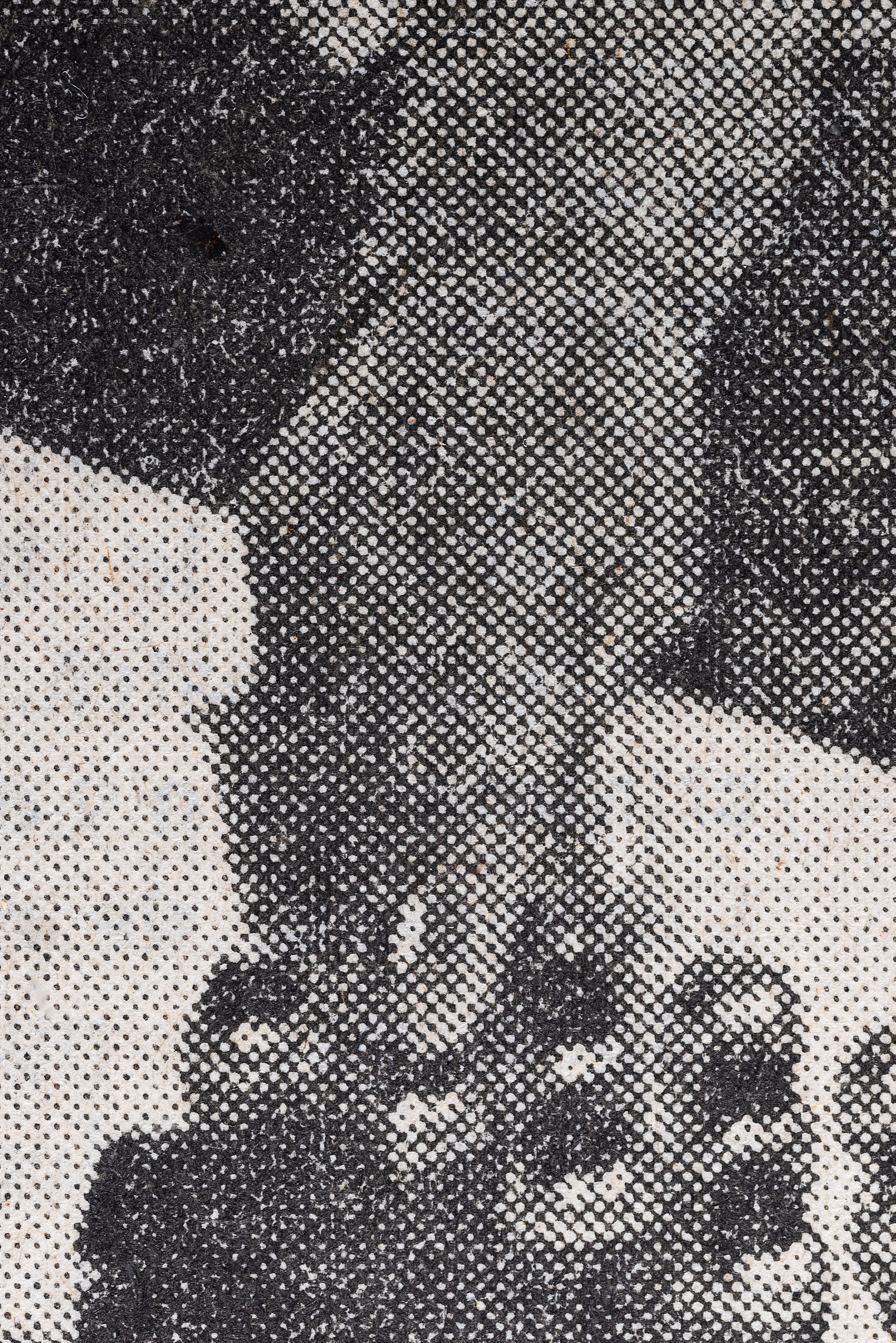

based on: 9. ZONA km.12 + 500. VEDERE SPRE POARTA ALBA – MIDIA, NAVODARI
MTTC-IPTANA, „Canalul Poarta Alba – Midia, Navodari“, Album Fotografic, etapa I, 1987
Archives of ADMINISTRATIA CANALELOR NAVIGABILE S.A., Agigea
FullHD (stills), 00:56:22
Axel Braun, Un drum pentru milenii (Agigea locks), 2014; FullHD (excerpt)
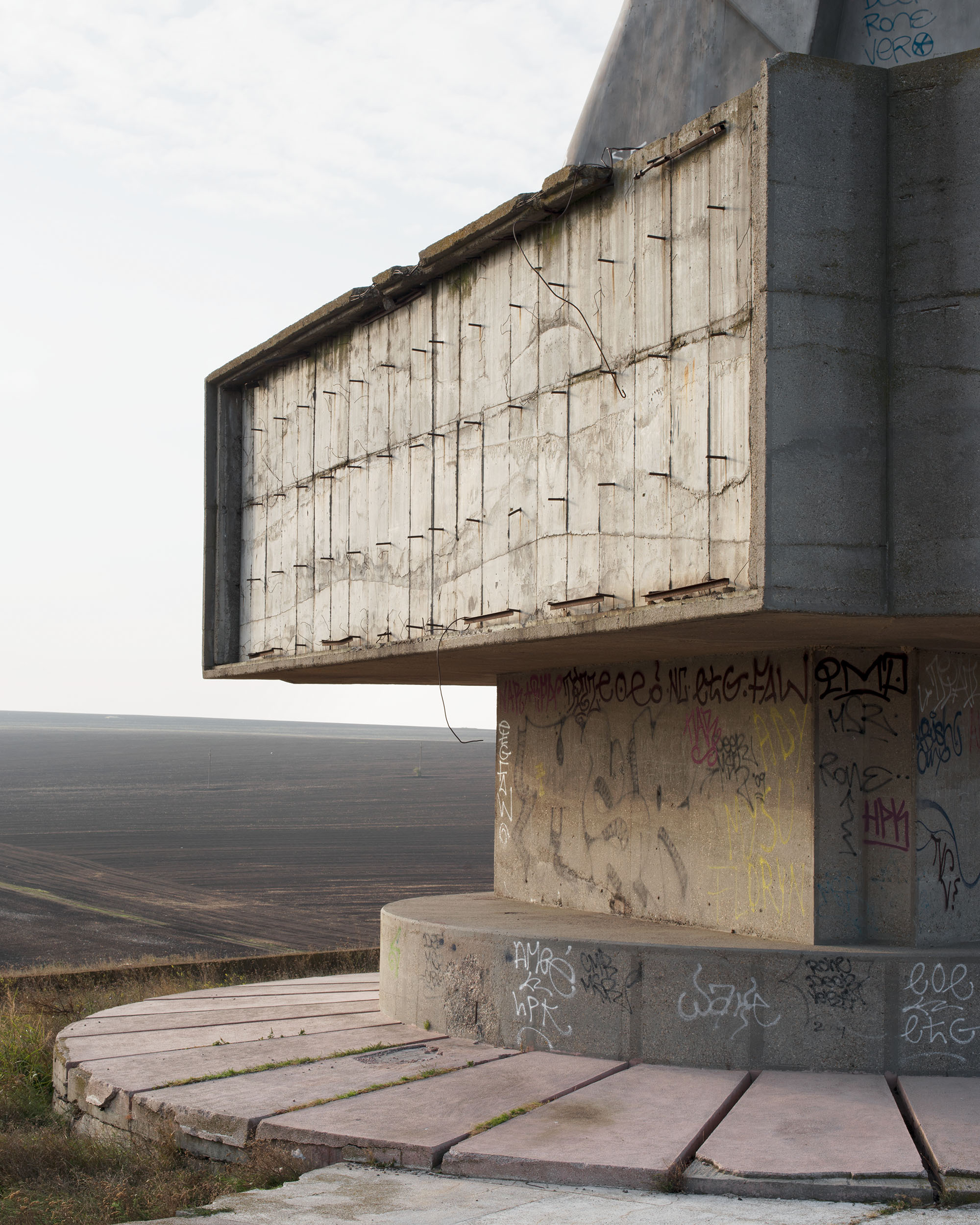
Between Agigea and Murfatlar, a monument for volunteer workers towers over the canal. The main part of the monument consists of a 36-meter-high flame made of stainless steel. At the foot of the sculpture, three bronze reliefs were attached, reportedly depicting Ceauşescu and his family. After 1989 the bronze panels (approximately 3t each) disappeared overnight.
DISTURBED HARMONIES [Anthropocene Landscapes]
Projektraum NEULAND, Bochum
2019, October 11 – November 2
Axel Braun, Un drum pentru milenii (Agigea locks, control room), 2014; FullHD (excerpt)

DISTURBED HARMONIES [Anthropocene Landscapes]
Bräuning Contemporary, Hamburg
2018, June 8 to August 24
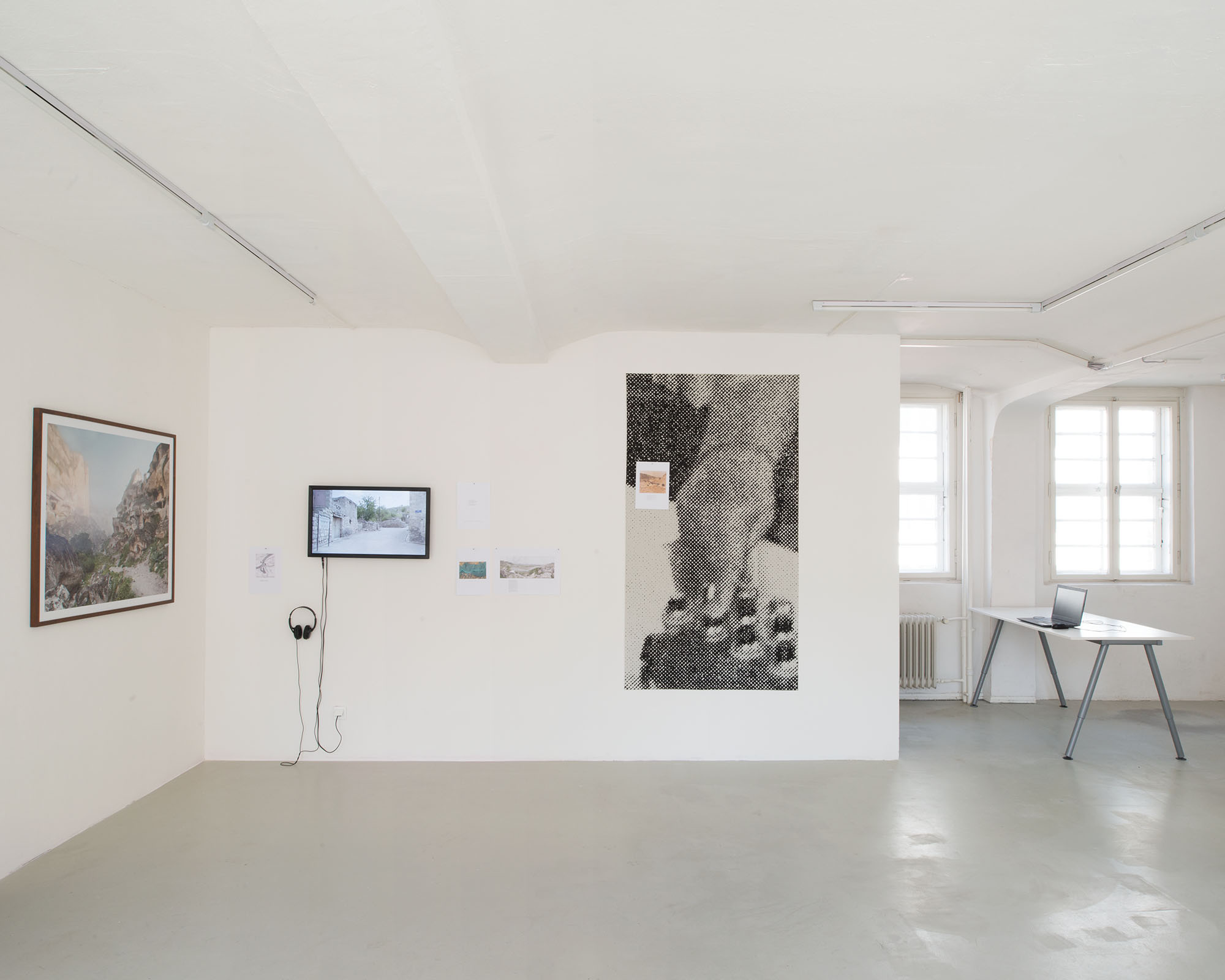
DISTURBED HARMONIES [Anthropocene Landscapes]
Bräuning Contemporary, Hamburg
2018, June 8 to August 24
DISTURBED HARMONIES [Anthropocene Landscapes]
Raum?Station, Zürich
2017, September 27-29
Axel Braun, Un drum pentru milenii (Danube-Black Sea Canal), 2014; FullHD (excerpt)
